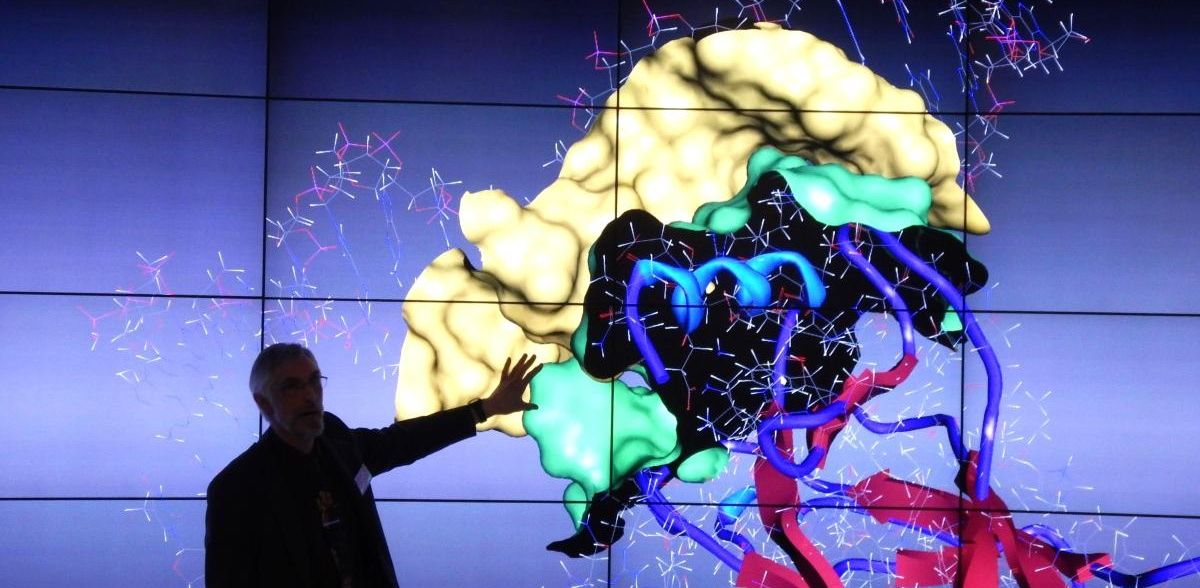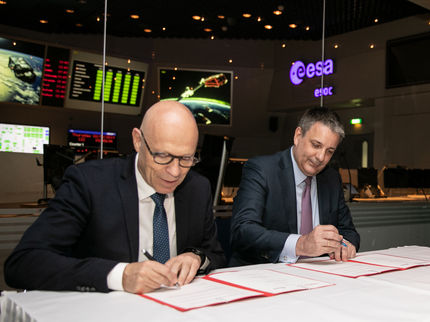Using computer game technology to develop new materials and new active substances against diseases
Bringing molecular relationships to the big screen of virtual reality
Advertisement
Bio-chemical research is increasingly dependent on accurate computer modeling and analysis. This requires different disciplines such as natural sciences, computer science and engineering to work hand in hand. A research group has been established at Bonn-Rhein-Sieg University of Applied Sciences (H-BRS) that brings together existing expertise in visual computing, biomedicine and materials science. With its computer-aided models, the group aims to bring molecular relationships to the big screen of virtual reality - and thus provide unexpected insights.
It is a revolution that computer-based modeling has sparked in the life sciences. Highly complex biochemical processes in humans, animals or plants, for example, can be visualized and analyzed down to the atomic level. Today, molecular modeling is a recognized and extremely fruitful part of research. Computer-aided approaches also make it possible to predict processes - an invaluable aid in researching active substances or diseases such as cancer.
A research group has been formed at Bonn-Rhein-Sieg University of Applied Sciences that aims to use this technology to find answers to socially relevant research questions that are difficult or impossible to answer using laboratory methods alone.
The cooperation links the three university research institutes IVC, IFGA and TREE. The aim of the scientists is to open up new subject areas and develop new analytical tools by combining experience from different specialist areas. The focus will be on material science and biochemical issues that can be efficiently investigated with the help of molecular modeling.
The abbreviation UMMBAS, which the group has given to the research project, reflects this. It stands for "Utilization of Molecular Modelling for Bio-Chemical Application Scenarios". The first topic that the research group has set itself is research into the myosin family. These proteins are found in muscle cells and are responsible for movement. Malfunctions are associated with serious diseases such as heart disease or neurological disorders.
The three-dimensional visualization of the processes at the atomic level will play a key role here. The Institute for Visual Computing (IVC) at H-BRS has extensive expertise in the visualization of large amounts of data, the processing of sensor data and the recognition of patterns and structures contained therein. In addition to the IVC, the Institute for Functional Gene Analytics (IFGA) and the Institute for Technology, Resource and Energy Efficiency (TREE) have jointly launched the UMMBAS project.
"The project is thus further advancing the digitalization of science at H-BRS," says Matthias Preller, Professor of Structural Biology and Chemical Analytics and spokesperson for the UMMBAS project. "We will develop active substances and materials more precisely and efficiently collaboratively within the university and with external partners - without location restrictions and across traditional disciplines."
The scientists at H-BRS are pursuing a novel approach with the idea of creating highly detailed three-dimensional models from the data to be analyzed and processing them simultaneously with other users who are located at other sites. "Distributed immersive VR environment" is the name of the concept, which offers many advantages for location-independent collaboration, but has hardly been researched with regard to biochemical issues. The concept of the distributed virtual environment is familiar from the world of computer games, where concepts for cooperative interactions have already been established. Bonn-Rhein-Sieg University of Applied Sciences has particular experience in the field of linking scientific visualization with computer game technology, which Professor Wolfgang Heiden is contributing to the UMMBAS project.
The software for the distributed virtual environments being developed as part of the UMMBAS project is to be made available to the general public in the longer term. In the short term, the project participants are hoping for an obvious benefit: Collaboration between the university campuses in Sankt Augustin and Rheinbach could benefit extensively.
Note: This article has been translated using a computer system without human intervention. LUMITOS offers these automatic translations to present a wider range of current news. Since this article has been translated with automatic translation, it is possible that it contains errors in vocabulary, syntax or grammar. The original article in German can be found here.




















































